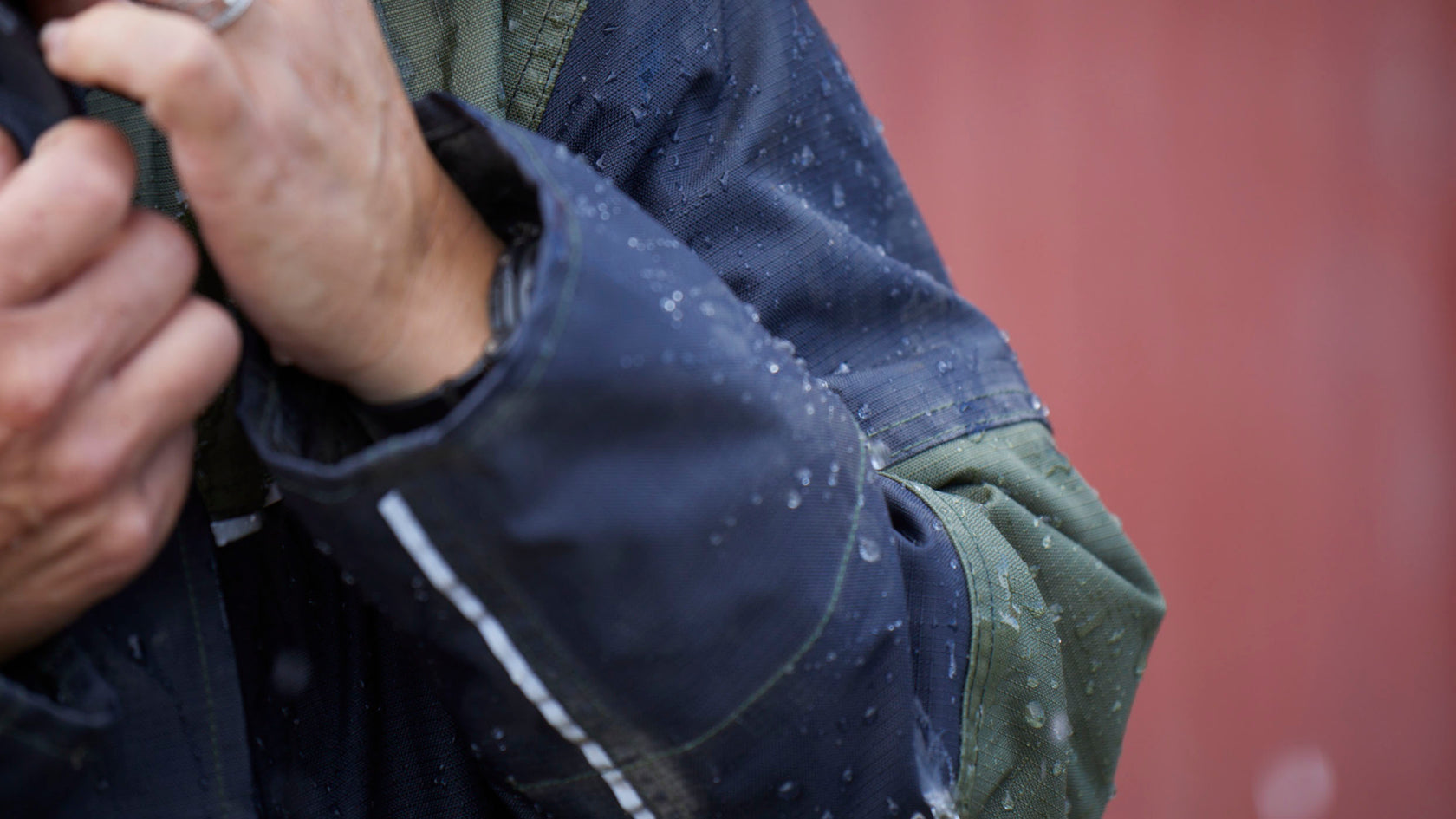Are you overwhelmed by options? Bamboozled by the jargon and the numbers?
To help you understand the wonders of waterproofness we've broken down a few key features of waterproof gear.
How do I know what to expect from a waterproof garment?
There are a number of factors that influence the overall waterproof performance of a garment, these include zips, seams and fabrics.
Globally, there is a standard test method that determines how waterproof a fabric is which is known as a ‘hydrostatic head’ test. The test and is performed using a
hydrostatic head test machine and involves sealing a section of the fabric and applying water pressure to the fabric.
The water pressure is purposefully applied to mimic a large vertical column filled with water placed on the fabric. This vertical column provides the measurement of mm (Millimeters).

WATER COLUMN
A ‘hydrostatic head’ test provides a unit of mm H2O. It measures how much water pressure a fabric can endure before water begins to penetrate.
The waterproofness of the fabric itself is just one component that contributes to how waterproof a garment is.
What is the difference between waterproof and water resistant?
A waterproof fabric is designed to prevent water penetration. Which is usually achieved by using a membrane that acts as a barrier, preventing moisture from permeating the fabric.
Water resistant fabrics are treated with a Durable Water Repellency coating (DWR), or a similar water repellent coating. They can be cheaper and often require re-application of the coating over time.
What other features are worth considering when it comes to understanding waterproofness?
Features such as neoprene cuffs provide a seal against water and mud keeping your forearms dry and protected.
Consider the job or activity you are doing when you choose your wet weather gear and how you expect it to perform.
For example a lightweight jacket may not be as durable as a heavier jacket, so you will need to decide if durability is more important than weight for your specific needs.


